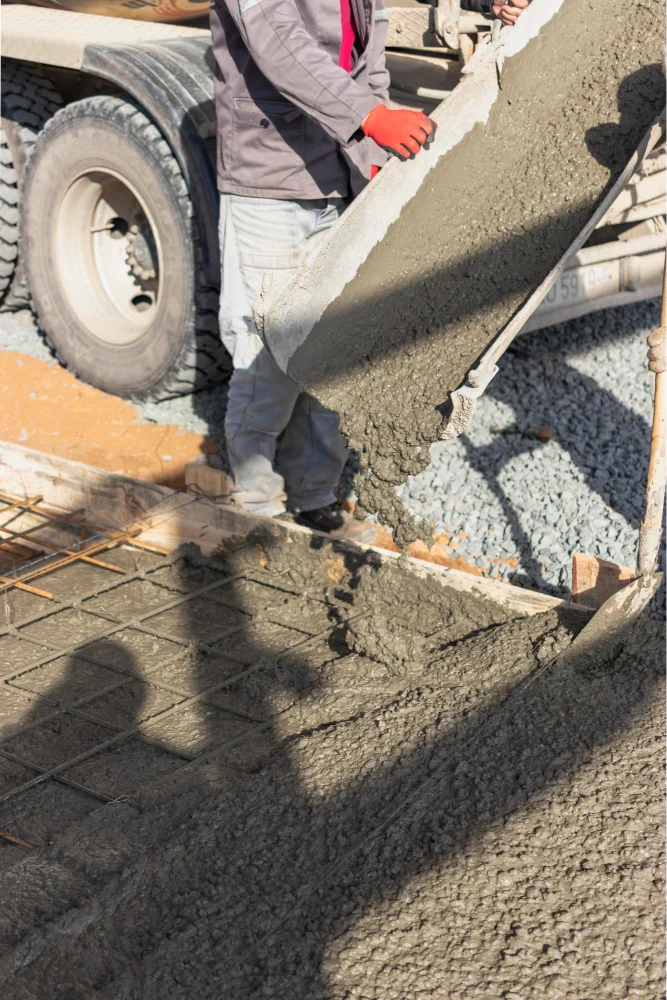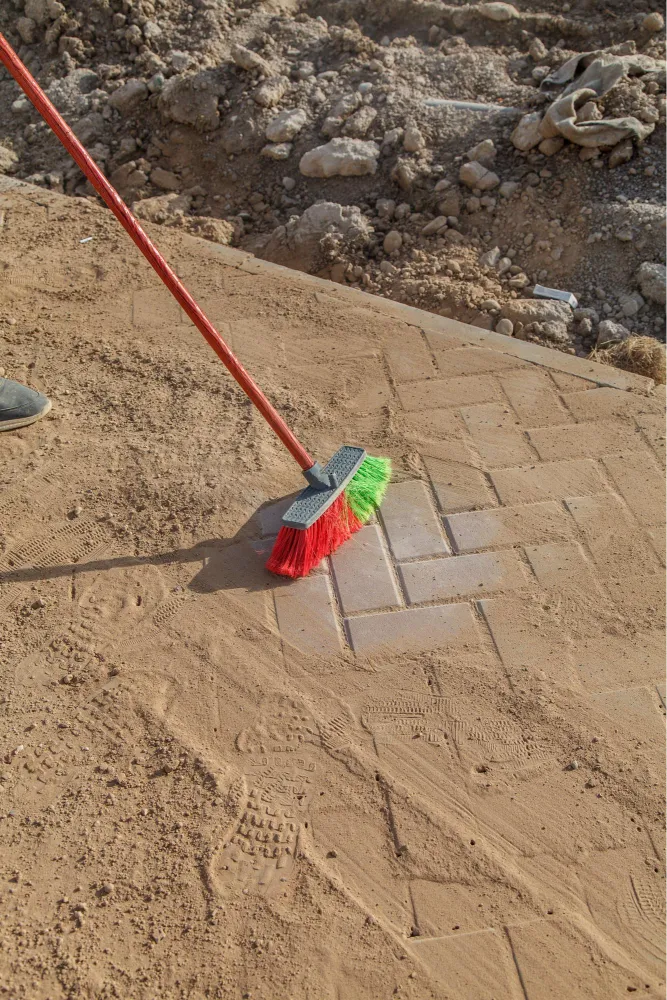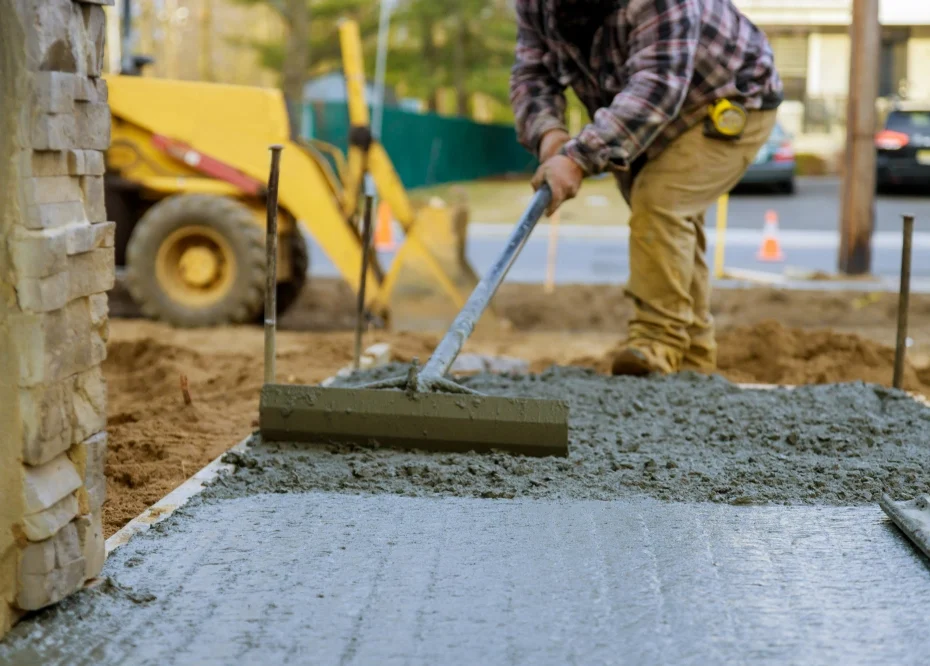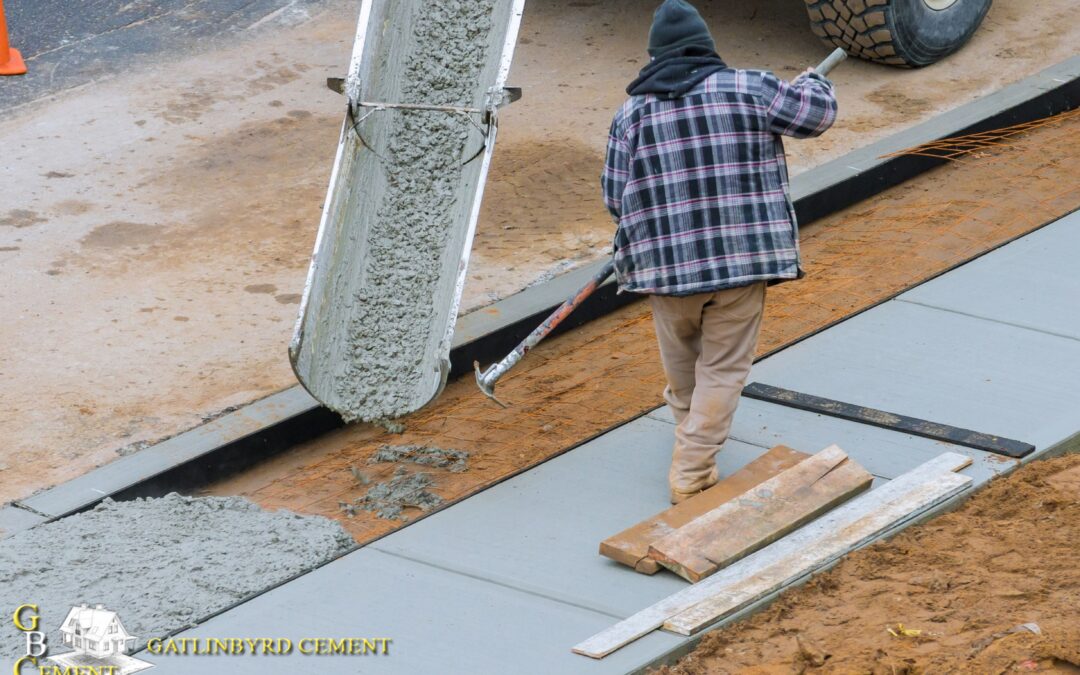Exploring the Options
When it comes to designing outdoor spaces, choosing the right flooring material is crucial for both aesthetics and functionality. In this article, we dive deep into the differences between stamped concrete and pavers, exploring their respective pros and cons. By the end, you’ll be equipped with the knowledge needed to make an informed decision for your outdoor flooring project. Whether you’re considering stamped concrete or pavers, our concrete company is here to guide you every step of the way. Let’s begin unraveling the intricacies of these popular landscaping options.
Understanding Stamped Concrete and Its Installation Process
Stamped concrete is a decorative method used in outdoor flooring and patio surfaces to replicate the appearance of materials like brick, slate, stone, or tile on concrete surfaces. It is also a cheaper option compared to pavers.
This technique involves these steps:
Base Preparation
It is necessary to properly prepare the area in which stamped concrete will be formed.
This includes removing any debris from the area, grading the surface to allow for proper drainage, and compacting the soil.
Pouring Concrete
After the base is ready, the space is covered with concrete. This can be accomplished by using ready-mix concrete that is supplied by truck or by mixing the concrete on the spot. To create a uniform surface, the concrete should be poured equally.
Applying the Color
The next step is applying color hardeners or integral colors to the surface of the freshly poured concrete to achieve the desired color.
Color hardeners are typically broadcasted onto the surface and then worked into the concrete using a float or trowel. In contrast, integral colors are mixed into the concrete before pouring.

Stamping Process
Then, stamps or molds are pressed into the concrete while it is still soft to create the desired patterns and textures. These stamps can replicate the appearance of materials like brick, slate, stone, or tile. Stamping should be done carefully and evenly to ensure uniformity across the surface.
Curing
After stamping, the concrete needs time to cure and harden. Curing may involve keeping the surface moist and covered with a curing compound or plastic sheeting to prevent premature drying and cracking. The duration of curing can vary depending on factors such as weather conditions and the type of concrete used.
Sealing process
When the concrete has cured, a sealer will be applied to the surface to ensure its durability and protect it from stains, UV exposure, and weathering. The type of sealer used may depend on factors such as the desired finish (e.g., glossy or matte) and the level of protection required.
Exploring Pavers and Installation Process
Pavers are important elements in landscaping and construction for making outdoor surfaces like walkways, patios, and driveways. They come in different materials and shapes like concrete, clay, brick, natural stone, or rubber, and in various shapes, sizes, and colors. These materials help create attractive outdoor areas, suitable for both foot and vehicles. They give flexibility in design, allowing for unique patterns and arrangements to enhance the look of outdoor spaces. Now let’s dive into the process of pavers installation:

Preparing the Site
All existing materials, plants, and rubbish must be removed from the area where the pavers will be laid. To guarantee a stable base.
Installing the Base
The prepared area will be covered with an even layer of crushed stone or gravel that has been spread and compacted. For the pavers, this base layer offers support, stability, and drainage.
Edge Restraints
Edge restraints, such as plastic or metal edging, will be installed along the perimeter of the area to keep the pavers in place and minimize shifting over time.
Sand Bedding
After that, a layer of bedding sand will be spread over the compacted base. The sand is screeded to create a level surface for laying the pavers.
Paver Installation
The next step is carefully laying the pavers in the desired pattern or design on top of the sand bedding. They should be typically placed one by one, starting from one corner and working towards the opposite end. Pavers may need to be cut to fit around edges or obstacles.
Compaction
When all the pavers are in place, the entire surface will be compacted using a plate compactor or a vibrating compactor. This helps to lock the pavers in position and creates a solid, even surface.
Applying Joint Sand
Finally, joint sand will be applied into the gaps between the pavers to fill any remaining spaces and stabilize the surface. Excess sand will then be swept away, and the surface will be compacted once more to ensure the sand settles properly.
Which One Lasts Longer? Stamped Concrete or Pavers
Both stamped concrete and pavers have the potential to endure for a significant period of time when maintained appropriately. Their durability is heavily influenced by factors such as weather, usage patterns, and upkeep routines. Both of these options require regular maintenance to prolong their lifespan, but stamped concrete is often preferred for its relatively simpler maintenance process compared to pavers. With routine cleaning and occasional resealing, stamped concrete can maintain its looks and structural integrity over the years, making it a practical choice for many homeowners.
Stamped Concrete VS Pavers: Pros and Cons
When comparing stamped concrete and pavers for outdoor flooring and patio surfaces, you need to consider several factors. We are here to guide you through their pros and cons; let’s begin.
Stamped Concrete Pros:
- Cost-effective initial installation compared to pavers: Stamped concrete cost typically requires less upfront investment compared to pavers, making it a more budget-friendly option.
- Versatile design options with various patterns and colors: Stamped concrete offers a wide range of design possibilities compared to pavers allowing you to achieve the desired aesthetic for your outdoor flooring.
- Low maintenance requirements once sealed: Stamped concrete requires very little maintenance after it has been sealed, only occasional cleaning is needed to sustain its aesthetic.
- Can mimic the appearance of natural materials like brick, slate, or stone: Stamped concrete offers an appealing substitute by replicating the appearance of natural materials at a fraction of the cost.
- Increase the value of your house: A nice stamped concrete patio surface can add up to 15% to your home’s value.
Stamped Concrete Cons:
- Risk of Cracking: Stamped concrete is more prone to cracking over time, especially in areas with freeze-thaw cycles or heavy usage, whereas pavers are known for their exceptional durability and are less likely to crack.
- Limited Repair Options: Repairing cracks or damages in stamped concrete is more challenging compared to pavers.
- Skilled Professionals Required for Installation: Achieving high-quality stamped concrete requires skilled professionals for its installation to ensure proper pattern alignment and consistency. In contrast, while pavers may also require professional installation, the process is generally less complex and labor-intensive compared to stamped concrete installation.
Pavers Pros:
- Durability: Pavers are renowned for their exceptional strength and durability, making them suitable for high-traffic areas such as driveways, walkways, and patios. They can withstand heavy foot traffic, vehicular traffic, and harsh weather conditions without cracking or deteriorating easily.
- Easy Repair Options: If a paver becomes damaged or cracked, it can be easily replaced without affecting the rest of the surface. This makes repairs simple compared to stamped concrete, where repairing cracks or damages can be challenging and may result in noticeable patches.
- Temperature Resilience: Pavers are less prone to temperature-related issues such as expansion and contraction, which can lead to cracking in stamped concrete. This resilience makes pavers particularly suitable for regions with extreme temperature variations.
Pavers Cons:
- Higher Cost: Pavers typically come with a higher upfront cost compared to stamped concrete. This is due to the cost of materials, as well as the labor-intensive installation process required for pavers.
- Maintenance Requirements: While pavers are durable outdoor flooring, they may require periodic maintenance to prevent weed growth between joints and ensure proper alignment. This maintenance can include more challenging tasks such as re-sanding joints, applying sealant, and replacing damaged pavers.
- Change Shape Overtime: Because of plenty of reasons, like weather, erosion, and ground movement, pavers may shift or settle over time. They may become uneven or face a little form shift.
Now that you’re aware of the advantages and disadvantages of both stamped concrete and pavers, you can choose the option that best suits your needs.
GATLINBYRD CEMENT Is the Solution to Your Concrete Problems
GatlinByrd Cement is a licensed company that has been offering a wide range of concrete services, including concrete stamping in Ypsilanti, Michigan, for several years, since 2007. As you know, concrete stamping needs to be done by professionals for the best results.
So if you need a reliable and professional concrete contractor in Michigan, don’t hesitate to call us; we will be there to help. Contact us now!

Have Questions? Contact Us Now!
Frequently Asked Questions
What are the differences between stamped concrete and pavers?
Stamped concrete replicates the appearance of materials like brick, slate, or stone on concrete surfaces, while pavers are individual units made of various materials like concrete, clay, brick, or natural stone.
Which option is more budget-friendly, stamped concrete, or pavers?
Stamped concrete typically requires less upfront investment compared to pavers, making it a more cost-effective option for initial installation.
How can I choose between stamped concrete and pavers for my patio resurfacing project?
Consider factors such as budget, design preferences, durability requirements, and maintenance considerations when choosing between stamped concrete and pavers for your outdoor space.
Do I need professional installation for stamped concrete?
Yes, professional installation is essential for stamped concrete to ensure precise alignment, consistent patterns, and durability. Skilled professionals prepare the base, apply color, create patterns, and seal the surface for optimal results and long-term satisfaction.

